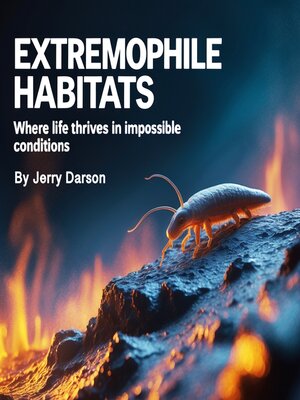Extremophile Habitats
audiobook (Unabridged) ∣ Where Life Thrives in Impossible Conditions
By Jerry Darson

Sign up to save your library
With an OverDrive account, you can save your favorite libraries for at-a-glance information about availability. Find out more about OverDrive accounts.
Find this title in Libby, the library reading app by OverDrive.



Search for a digital library with this title
Title found at these libraries:
| Library Name | Distance |
|---|---|
| Loading... |
This audiobook is narrated by a digital voice.
Extremophiles are living organisms that defy conventional expectations of where life can exist. Thriving in the most inhospitable environments on Earth, they have reshaped our understanding of biology, evolution, and even the potential for life beyond our planet. These organisms—primarily microbes such as archaea and bacteria—have adapted to conditions previously thought to be sterile: scalding temperatures, crushing pressures, high levels of radiation, extreme salinity, acidity, and even vacuum-like dryness.
To grasp the significance of extremophiles, it's essential to first understand their place within the broader tree of life. While animals and plants often dominate our concept of biology, extremophiles are predominantly microscopic and belong to ancient domains of life: Bacteria and Archaea. These organisms represent some of the earliest life forms on Earth, with fossils suggesting they existed over 3.5 billion years ago. Their resilience suggests that life may have originated under far harsher conditions than those we consider habitable today. In many ways, extremophiles offer a living window into Earth's primordial past.
The discovery and classification of extremophiles have revolutionized microbiology and planetary science. For decades, scientists assumed that life required moderate conditions similar to those humans prefer. That belief was shattered in the late 20th century with the exploration of deep-sea hydrothermal vents, where entire ecosystems, supported not by sunlight but by chemical energy, were found flourishing in complete darkness and intense heat. From there, research expanded to other extreme environments: acidic hot springs, frozen polar deserts, hypersaline lakes, and radioactive zones.







